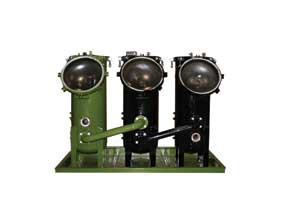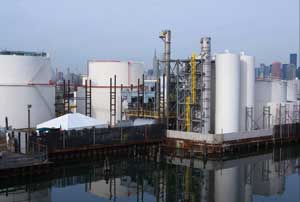April 2010
 View Full Print Edition
View Full Print EditionBusiness Briefs
Columns

Reorganization and Investment Opportunities in the Ethanol Industry
By Bradley R. Kruse

Ethanol's Agenda Item No.1: Extend the Tax Incentives
By Bob Dinneen

The Right Strategy at the Right Time
By Mike Bryan

Sign of a New Era
By Susanne Retka Schill

Assessing Algae's Potential
By Rona Johnson

Biodiesel Jobs and Purification
By Ron Kotrba

Biodiesel Purification Options
By Al Schultz
Featured

Measured Expectations
By Kris Bevill
The U.S. EPA will begin requiring participants of its mandatory greenhouse gas emissions reporting program to use prescribed methods on April 1. How do these methods differ from the best practices that have been used until now and what changes should producers look out for in the future?

Gumming up the Works
By Holly Jessen
This year's delayed harvest presents farmers and ethanol producers with several challenges—from dealing with high moisture corn to testing moldy corn for mycotoxins.

Setting Boundaries with the Low Carbon Fuel Standard
By Anna Austin
Despite strong opposition, in January, California approved implementation of a low carbon fuel standard. The California Air Resources Board is now preparing biofuel producers for compliance and anticipates many challenges in ensuring fairness and accuracy.

Ethanol: Growing It, Burning It and Breaking Records
By Luke Geiver
A home-grown, corn-fueled race car tops 255 mph on Rockett Brand E85.

Biofuels or Bust
By Lisa Gibson
Algae show enormous potential as a biofuel feedstock, prompting numerous companies to further develop production and conversion systems. But some researchers remain skeptical as large-scale commercialization of reliable processes seems a distant goal.
Open Ponds Versus Closed Bioreactors
By Anna Austin
There are pros and cons associated with the economic commercial production of algae using closed bioreactors and open ponds. Is one method superior, or is there room for both?

BCAP Rule Revision
By Anna Austin
The USDA released the proposed rule for the Biomass Crop Assistance Program in February and is now under pressure to make essential changes. Until the final rules are determined, program payments and applications have been frozen.
JOBS: Judgments on Biodiesel Stimulus
By Nicholas Zeman
Three different jobs bills made hundreds of headlines in February, as Democrats and Republicans debated which policy measures actually create jobs. All the biodiesel industry could do, seemingly, was watch.

Crystal Clear Fuel
By Nicholas Zeman
As producers look to meet increasingly stringent quality specifications, purification, distillation and filtration services are becoming more and more important. Combined with the cost-reducing benefits provided by many products and "polishing" designs, purification practices can ultimately lead to superior fuels and profit margins.
Contributions

Expanding Ethanol Dehydration
By Felipe Tavares, Jansley Pascoal and Bruno Maia
A number of alternative methods are available for debottlenecking cooling water systems and the molecular sieves that are used for ethanol dehydration.

The Business of Growing Eucalyptus for Biomass
By Ronalds Gonzalez, Jeff Wright and Daniel Saloni
Supplying biomass is a growing business, and rapid-growth eucalyptus in the Southern U.S. could be a source of low-cost delivered biomass.

Great Green Hope: The Corporate Love Affair With Algae
By Todd Taylor
Algae may not be ready for commercialization yet, but the federal government and several large companies are investing in its potential as a drop-in fuel and for its use in the chemicals, feed, nutraceuticals and food industries.

IP Pitfalls in Talking With Others
By Richard B. Hoffman
People in the renewable energy and clean technology fields regularly need to speak with others outside their company for solutions to ongoing research and development problems. For innovators working on a new invention who realize the need to safeguard company confidential information and intellectual property rights in their inventions, however, the question is: Whom can you safely talk to, when and under what conditions?









